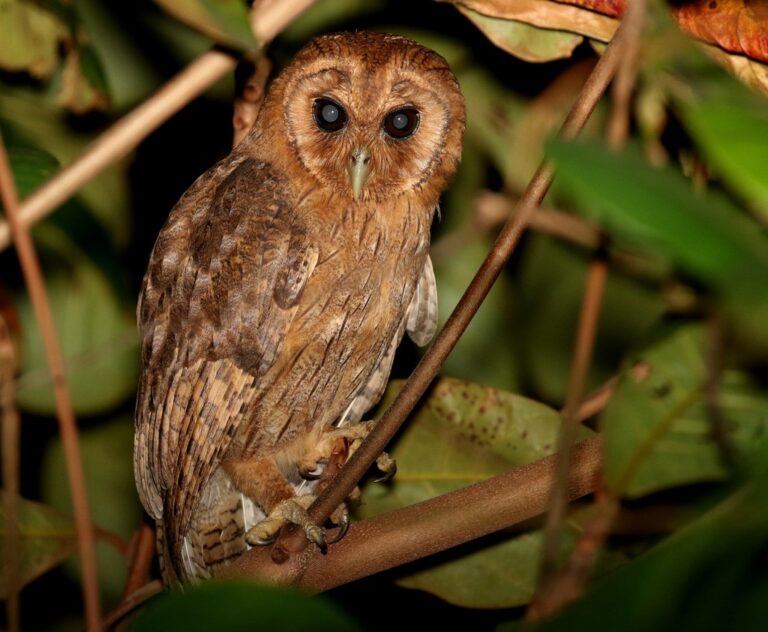Birdfinding.info ⇒ Fairly common across much of Jamaica, but strictly nocturnal and not easy to find. Consistent sites include Hardwar Gap (especially Woodside Drive), San San, and Marshall’s Pen. It has also been found often at Rocklands Bird Sanctuary, Green Castle Estate in Robin’s Bay, and Forres Park Guest House in Mavis Bank. A large proportion of sightings occur on or near hotel properties—presumably due in part to the relative ease of detecting it in semiopen areas where visiting birdwatchers stay overnight.
Jamaican Owl
Asio grammicus
Endemic to Jamaica, where it occurs forests and open woodlands throughout the island, including some settled areas.
Identification
A medium-sized owl with dark brown upperparts and rich tawny, streaked underparts. Some individuals are deep rufous. Small ear-tufts are sometimes raised, but not always visible.
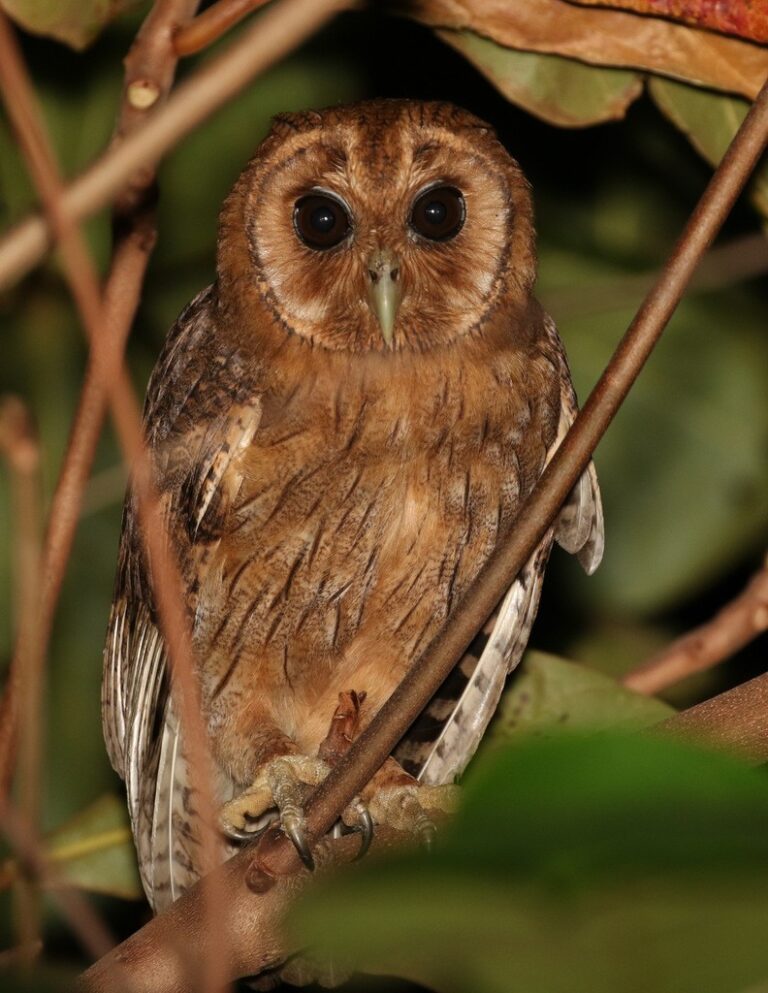
Jamaican Owl, typical plumage, with ear-tufts lowered. (Blue Hole Road, Jamaica; January 29, 2019.) © Matthew Grube
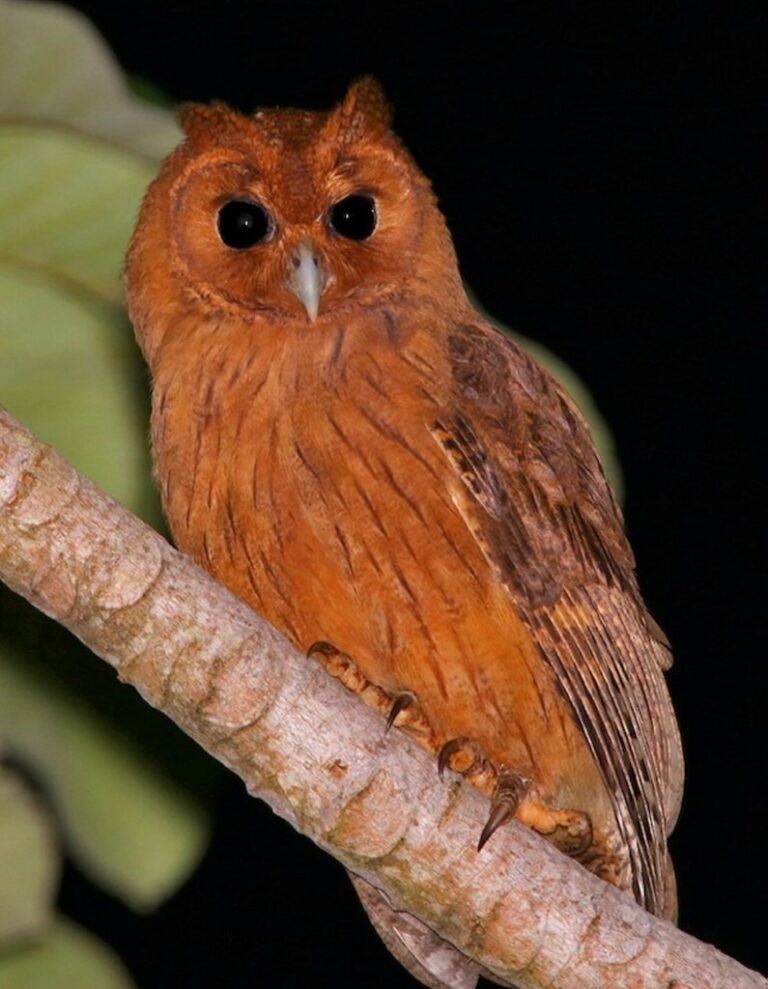
Jamaican Owl, rufous morph. (Brown’s Town, Jamaica; February 18, 2018.) © Tim Avery
Not readily confused with the only other owl known from Jamaica: the much larger, ghostly pale “White-winged Barn Owl”. The Jamaican Owl’s upperwings are mostly dark with paler bands in the flight feathers. Its underwings are mostly pale with thin black bands on the flight feathers and a black crescent at the base of the primaries.
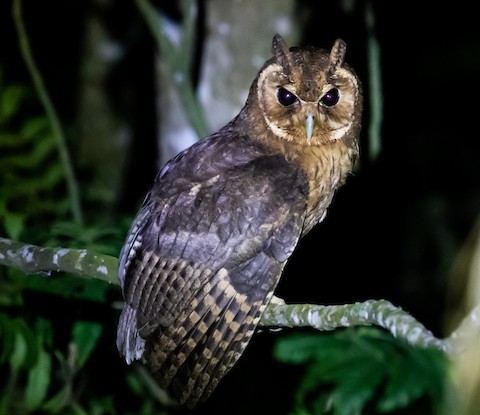
Jamaican Owl, with ear-tufts raised and wing partially spread, showing upperwing pattern. (Gordon Town, Jamaica; February 9, 2023.) © Ron Hoff & Dollyann Myers
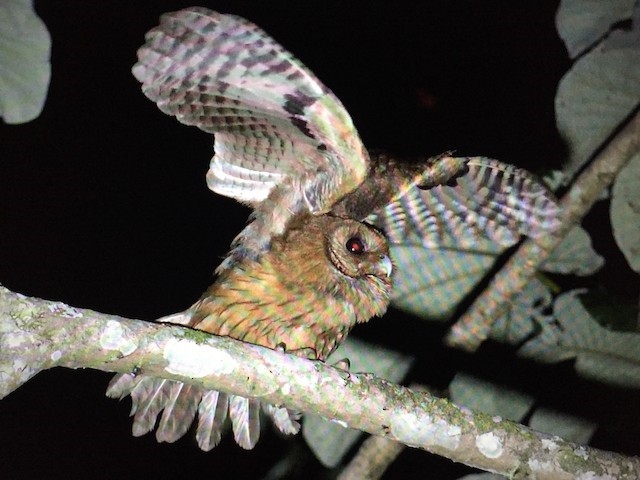
Jamaican Owl taking flight and showing its underwing pattern. (Orange Hall, St. Ann, Jamaica; March 28, 2016.) © Martin Kennewell
Voice. Common call is a fairly high-pitched, sharp whoo!
Also a deep, primitive croak or growl: WH-A-A-R-R: The Northern Potoo also gives a deep, primitive croak, but the potoo’s call is more evenly monotone and froglike, without the breathy, growling quality of the owl’s call.
Notes
Monotypic species.
More Images of the Jamaican Owl
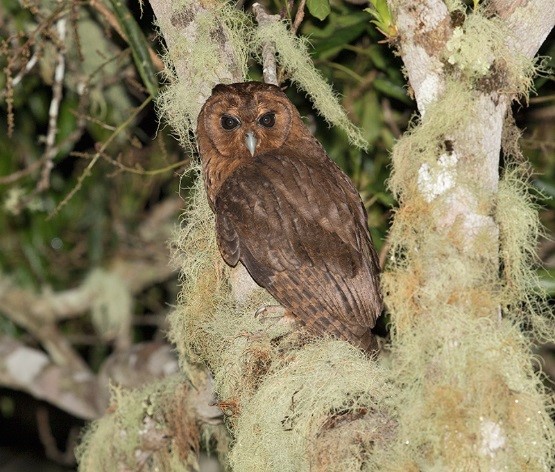
Jamaican Owl. (Silver Hill Gap, Jamaica; March 24, 2015.) © Sam Woods
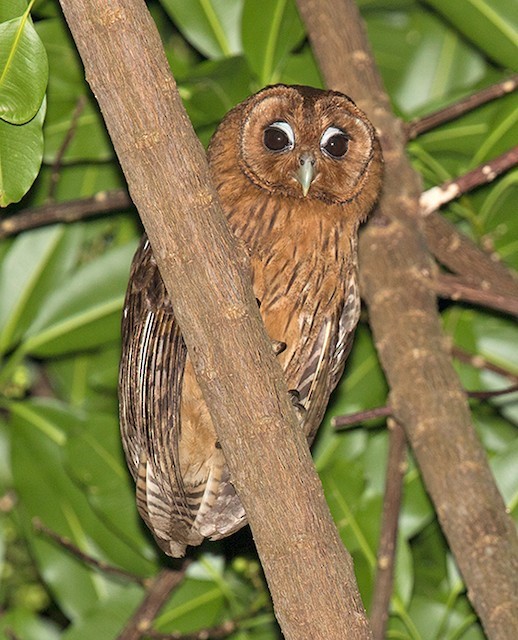
Jamaican Owl. (Goblin Hill Villas, San San, Jamaica; March 21, 2016.) © Sam Woods
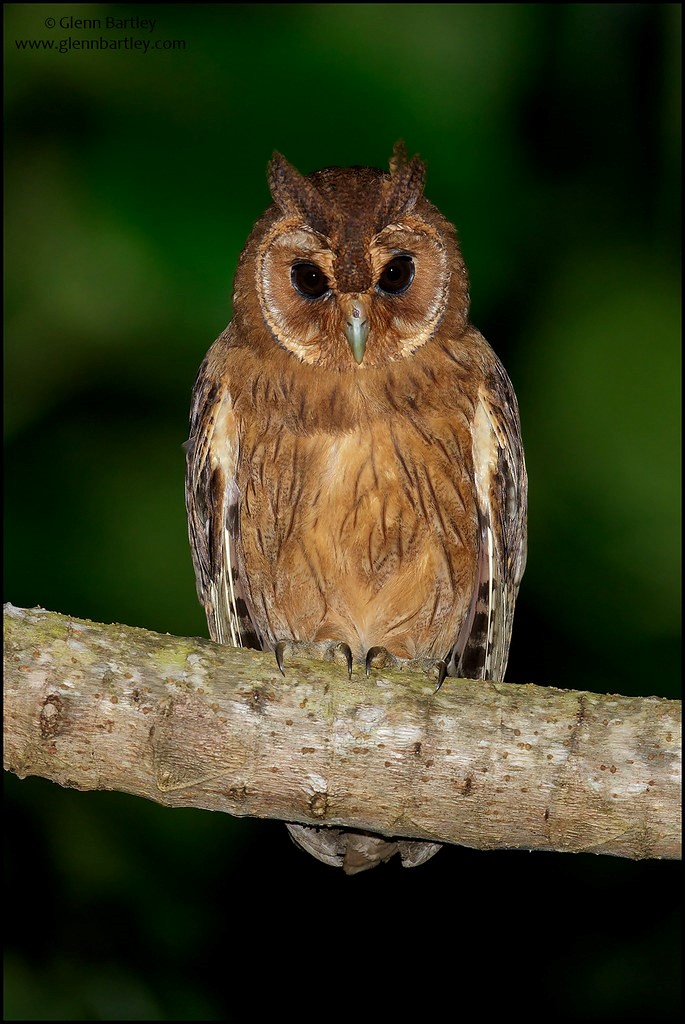
Jamaican Owl, showing its ear-tufts. (San San, Jamaica; February 23, 2018.) © Glenn Bartley
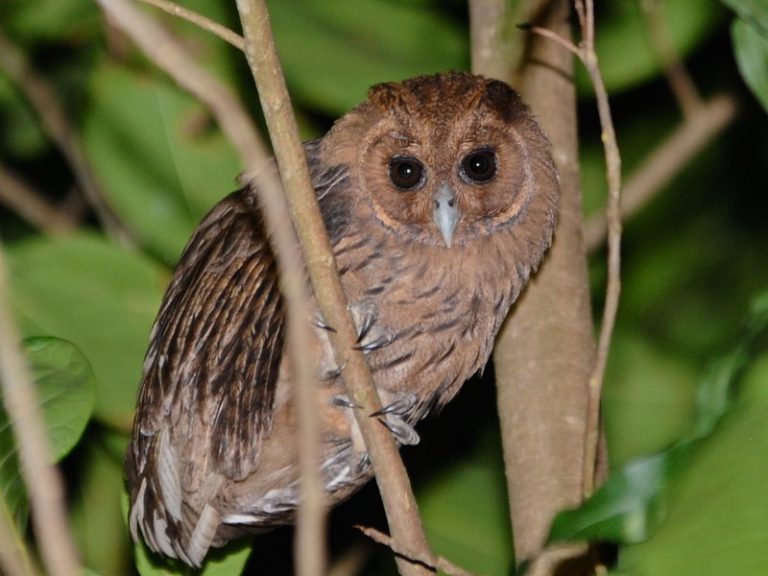
Jamaican Owl. (San San, Jamaica; November 2013.) © Alan Van Norman
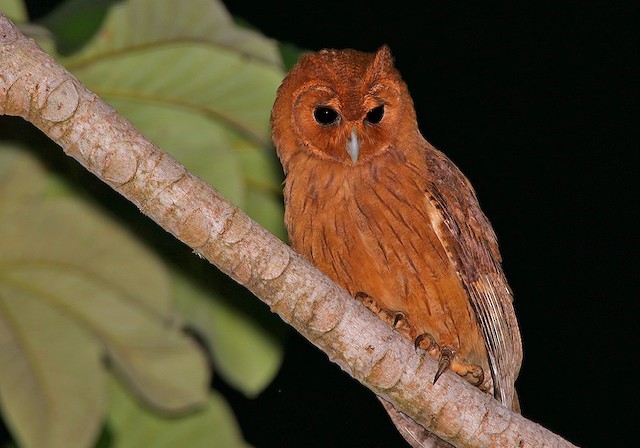
Jamaican Owl, rufous morph. (Brown’s Town, Jamaica; February 18, 2018.) © Tim Avery

Jamaican Owl. (San San, Jamaica; November 2013.) © Alan Van Norman
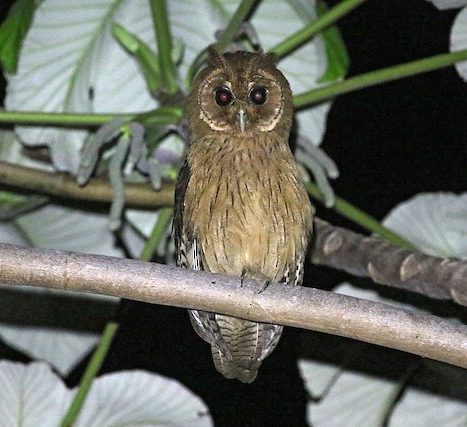
Jamaican Owl. (Goblin Hill Villas, San San, Jamaica; January 15, 2018.) © Charles Hesse TROPICAL BIRDING

Jamaican Owl. (Hotel Mockingbird Hill, San San, Jamaica; March 20, 2009.) © Paul B. Jones
References
BirdLife International. 2016. Pseudoscops grammicus. The IUCN Red List of Threatened Species 2016: e.T22689501A93232472. http://dx.doi.org/10.2305/IUCN.UK.2016-3.RLTS.T22689501A93232472.en. (Accessed September 27, 2017.)
eBird. 2017. eBird: An online database of bird distribution and abundance. Cornell Lab of Ornithology, Ithaca, N.Y. http://www.ebird.org. (Accessed September 27, 2017.)
iNaturalist. 2017. https://www.inaturalist.org/. (Accessed September 27, 2017.)
König, C., and F. Weick. 2008. Owls of the World (Second Edition). Yale University Press.
Haynes-Sutton, A., A. Downer, R. Sutton, and Y.-J. Rey-Millet. 2009. A Photographic Guide to the Birds of Jamaica. Princeton University Press, Princeton, N.J.
Mikkola, H. 2013. Owls of the World: A Photographic Guide (Second Edition). Firefly Books, London.
Raffaele, H., J. Wiley, O. Garrido, A. Keith, and J. Raffaele. 1998. A Guide to the Birds of the West Indies. Princeton University Press, Princeton, N.J.
Xeno-Canto. 2017. Jamaican Owl – Asio grammicus. https://xeno-canto.org/species/Asio-grammicus. (Accessed September 27, 2017.)
